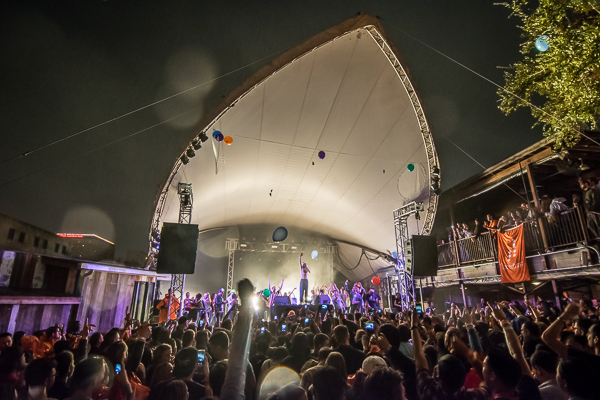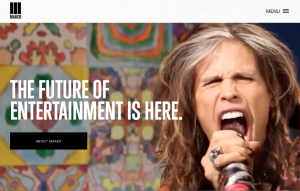I love the immersive experience of SXSW. Seeing, hearing, conversing, touching and tasting* a culture is essential to getting a real understanding of it. And this place, at least for this week, is the intersection of technology, media, culture and business. Being here helps to understand the context of what I see from a greater distance in regular life.
 What does SXSW sound like? To me, it’s the nonstop cultural mashup of Girl Talk. It all comes together as a compelling stream of youth, energy and flagrant copyright violation.
What does SXSW sound like? To me, it’s the nonstop cultural mashup of Girl Talk. It all comes together as a compelling stream of youth, energy and flagrant copyright violation.
One of the things I’ve been investigating here is the ongoing battle for control of something I’m calling The Engagement Layer in mobile and internet. I’m using that term to mean the place that the user puts his attention. (Back in the olden days, we called this “Portal”) The gigantic explosion of Apps, media, social services and big data all come together in the battle for the top layer of that 3×4 inch screen (for mobile) or 10×12 inch screen (for computing).
The companies that control the Engagement Layer – for the time they hold that control – have an immediate opportunity to gather massive wealth. And every few months, some new game-changing technology is introduced that shakes up the landscape.
Note that the Engagement Layer does not necessarily refer to the main screen you log in with. There’s plenty of opportunity in building an Engagement Layer for a specific area of interest. Food, photography, music, social interaction and more can be brought together and presented to the user in subject-specific engagement.
Those who own a chunk of the Engagement Layer want to hold on to it and expand. And there are tens of thousands of startups that are tying to get into the game and either knock off the top players, or, more frequently, sew up existing services to make a new top layer. Some examples.
Twitter v. Facebook
Twitter and Facebook continue their war, but it’s become an open firefight being waged through the API. They apparently have changed the Terms of Use to forbid major broadcasters from running their content on the same screen simultaneously. (I can’t seem to find a reference to this anywhere on the internet, but the sources were very credible.) In this case, they are fighting to provide the Engagement Layer bridge between the internet and broadcast TV.
 Maker Studios
Maker Studios
I got to see Ynon Kreiz, CEO of Maker Studios yesterday speaking about the way are using a data-driven curation model to create an Engagement Layer on top of Youtube. I hope to do a longer post on what I saw in that session. I’ll quote my friend Emmanuel Fraysse, “That guy’s a killer.” Later in the day, Disney announced that they were in talk to buy Maker Studios.
Getty
I think the Getty move should also be seen in the context of the battle to control the Engagement Layer. It has three things that any successful player needs here. First, engagement in mobile is driven by photos, and they have a lot of photos. Engagement is also driven, under the hood, by semantic connectivity. (By this I mean, “get me from this thing I’m interested in to this other thing I’m interested in easily or automatically”.)
And, of course, Getty has a lot of users, which is often what companies are really paying for in an acquisition. (Facebook paid $19 billion to purchase WhatsApp – a half-million dollars worth of code and 400 million users.)
All of the other discussions I saw in the last few days – including those involving Amazon, Mental Floss, Atavist, Twitter, Dropbox, and a couple dozen other companies I’ve never heard of – all of these discussions could be best understood in the context of a battle for control of some piece of the Engagement Layer.
*In case you were wondering. It tastes like bacon fried rice, with a Monster Energy Drink and Vodka.

